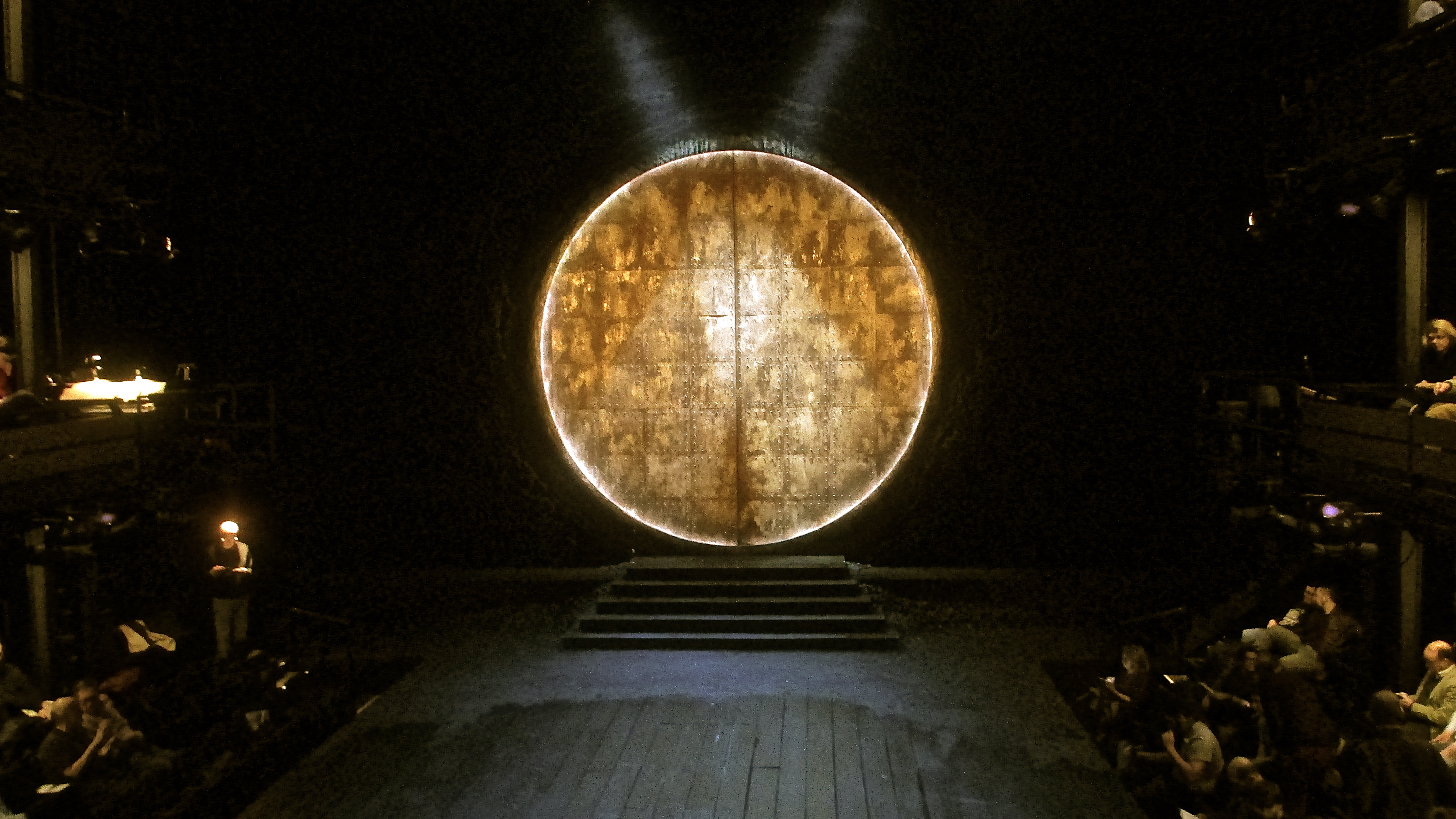No play in Shakespeare is more impelled by the power of story than PERICLES. It could be a tale improvised on the spot, out of bits of myth and wrinkles of fate, a complication here, a resolution there. Its domain is the Mediterranean, which means, in the age of Shakespeare, a tale of all the world. Its hero, the Prince of Tyre, flees the incestuous ruler of Antioch, whose terrible secret he has divined, in course of which he gains, then loses, both wife and child, thought by him to have perished, although we know otherwise. Virtue will be preserved and villainy damned. Pericles sees in part: we, through the god’s eye of story, see more and eventually all.
Trevor Nunn’s production at Theater for a New Audience is presided over by a luminous disk, which is alternately sun, moon, or eye on the sea (Robert Jones’ design is remarkable similar to Jan Versweyveld’s sun-dominated set for Ivo van Hove’s Antigone a few months ago at BAM). The storyteller Gower (Raphael Nash Thompson) represents, as the layer down of cosmic patterns, a greater agency than the hero himself, who is played with dash and empathy by Christian Camargo. Music cannot, when story leads, be far behind, and Nunn has assembled a composer, Shaun Davy, and a corps of musicians from the PigPen company to elaborate the tale. The result is gloriously expansive, yet clear and intricate. The strands of the plot stand out like gold threads on an embroidery.
The script has not been so much nipped and tucked (as I have seen done before) as had the seams let out (drawing on the theory that Shakespeare enhanced and expanded on a play by George Wilkins). The full improbable sweep of the action is worn unashamedly, stepped into by a vivacious ensemble undaunted by shipwrecks, 16-year leaps in time, piracy, murderous complots, brothel keeping, the averting of a famine, rescues and reunions. Every thread is pulled through, not just by the clarity of the acting, but by a color scheme in the sets and, especially, the costuming (Constance Hoffman) that delineates the tale visually. This is nowhere more fruitful than in the resemblance between Pericles’ wife Thaisa (Gia Crovatin) and their daughter Marina (Lilly Englert). Marina is dressed in the second half, having come of age, as Thaisa was in the first. It is impossible, as Marina’s adventures unfold, not to bear in the mind’s eye an image of her origins and the reunion to come.
Englert, for her part, continues to be a most interesting talent. She has a vocal style that is both malleable and instantly recognizable, putting a stamp on every role she plays. Not everyone makes the same impact as she and Carmago, but there’s a seamless unity of energy and tone. They’ve achieved a balance in the acting perfect to the play, enactment enfolded, as it were, inside a tissue of telling. This makes PERICLES about something other than emotion, affecting as the reunion of Marina and Pericles is, or even the thrill of action, no matter how sensational the turns of plot. Story makes a metaphysical claim: there is a pattern, if not to existence itself, then to how it is experienced. There are wrongs to be righted, those to whom we belong, endings that ought to be, and, in story, all of that conspires to be. That it doesn’t, for most of us, seem so in life means, in the world of story, that the pattern we see is partial, some nuance of karma or fate invisible to our eyes. Story in PERICLES, this stellar of tales, is the universe as we wish it made manifest by the teller.
PERICLES continues through March 27, 2016. For tickets and information, click here.
